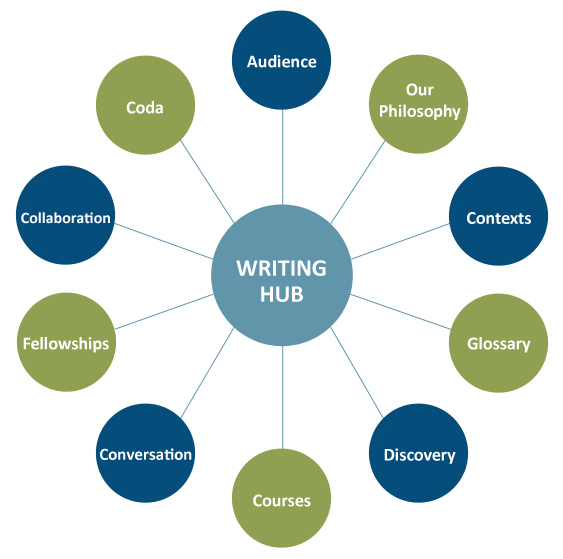REFERENCES
Aristotle. (1984). Poetics. In Jonathan Barnes (Ed.), The complete works of Aristotle: The revised oxford translation, vol. 2. Princeton, N.J: Princeton University Press.
Assoum, Mohamad; Liu, Crystal; & MacDonald, Ashleigh. [moekalsoon1]. (2011). WRIT1002 winter 2011 Sputnick vs Soap presentation. Retrieved from http://www.youtube.com/v/viCUDB0eacg?version=3&hl=en_US
Booth, Wayne C. (2004). The rhetoric of rhetoric: The quest for effective communication. Malden, MA: Blackwell Publishing.
Bruffee, Kenneth A. (1984). Collaborative learning and the "conversation of mankind". College English, 46(7), 635–652.
Burke, Kenneth. (1973). The philosophy of literary form: Studies in symbolic action. Berkeley: University of California Press.
Connolly, Polly (Producer), & Fitzgerald, Mark (Director). (2011). Sportsbetting [Television series episode]. The Gruen transfer. New South Wales, Australia: ABC1.
Council of Writing Program Administrators, National Council of Teachers of English, & National Writing Project. (2011). Framework for success in postsecondary writing. Retrieved from http://wpacouncil.org/files/framework-for-success-postsecondary-writing.pdf
Eggins, Suzanne. (2005). An introduction to systemic functional linguistics (2nd ed.). New York: Continuum.
Krathwohl, David R. (2002). A revision of Bloom’s taxonomy: An overview. Theory into Practice 41(4), 212-218.
Kuh, George D. (1996). Guiding principles for creating seamless learning environments for undergraduates. Journal of College Student Development, 37(2), 135-148.
Lunsford, Andrea. (n.d.). Scholarly definitions of rhetoric. American rhetoric: Definitions of rhetoric. Retrieved from http://www.americanrhetoric.com/rhetoricdefinitions.htm
Mayer, Richard E., & Moreno, Roxana. (2003). Nine ways to reduce cognitive load in multimedia learning. Educational Psychologist, 38(1), 43-52.
Moreno, Roxana. (2004). Decreasing cognitive load for novice students: Effects of explanatory versus corrective feedback in discovery-based multimedia. Instructional Science, 32(1), 99-113.
Ong, Walter J. (1988). Orality and literacy: The technologizing of the word. New York: Routledge.
Porter, James. E., & Sullivan, Patricia. (1997). Opening spaces: Writing technologies and critical research practices. Greenwich, CT: Ablex.
Porter, James E.; Sullivan, Patricia; & Johnson-Eilola, Johndan. (2009). Professional writing online, version 3.0 (3rd ed.). New York: Longman.
Prior, Paul; Solberg, Janine; Berry, Patrick; Bellwoar, Hannah; Chewning, Bill; Lunsford, Karen J., . . . Walker, Joyce. (2007). Re-situating and re-mediating the canons: A cultural-historical remapping of rhetorical activity. Kairos: Rhetoric, Technology, Pedagogy, 11(3), Retrieved from http://kairos.technorhetoric.net/11.3/topoi/prior-et-al/core/coreweb/usingCHAT.html
Pullman, George. (1994). Rhetoric and hermeneutics: Composition, invention, and literature. Journal of Advanced Composition, 14(2), 367-387.
Pullman, George. (2013). Persuasion: History, theory, and practice. Indianapolis, IN: Hackett Publishing.
Richards, I. A. (1936). The philosophy of rhetoric. New York: Oxford University Press.
TheSputnikAgency. (2009, July 8). Sputnik Agency – Gruen Transfer 2009. Retrieved from http://youtu.be/KfF8aahznDE
Williams, Joseph M., & Colomb, Gregory G. (2010). Style: Lessons in clarity and grace (10th ed.). Boston: Longman.
Zumbach, Joerg. (2006). Cognitive overhead in hypertext learning reexamined: Overcoming the myths. Journal of Educational Multimedia and Hypermedia, 15(4), 411-432.

